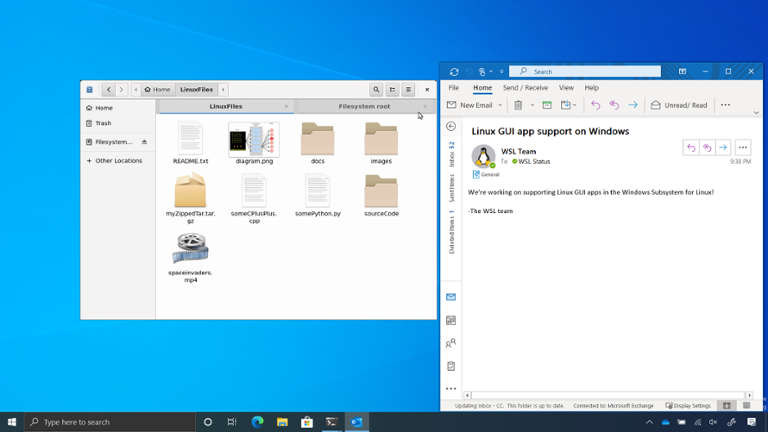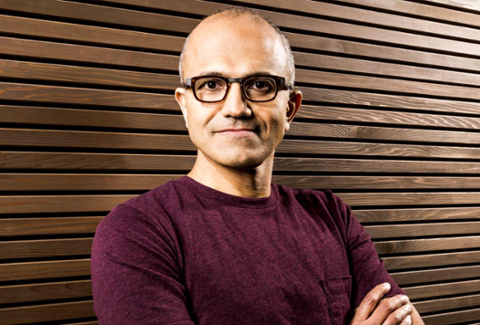Once upon a time, Microsoft loudly opposed anything open source. Former CEO Steve Ballmer once infamously referred to Linux as a “cancer.” But now that view seems to be changing: Not only has Microsoft spent the past few years very publicly embracing open source, but Windows 10 will eventually support Linux GUI apps.
At this year’s BUILD conference (temporarily transformed into a virtual event, thanks to COVID-19), Microsoft revealed that it’s adding Linux GUI support to the Windows Subsystem for Linux (WSL), the compatibility layer for running Linux binary executables on Windows 10 and Windows Server.
“One of our other most prolific requests is to support not just command-line apps, but Linux GUI apps as well,” read the Microsoft blog posting that accompanied the announcement. “For example, some users want to run their preferred Linux GUI text editor or IDE in a Linux environment and work on their code stored locally within their distro’s filesystem, or simply develop Linux GUI apps on their Windows machine.”
The work is still at a relatively early stage, and Microsoft used BUILD to show off a few Linux apps such as the mpv media player running on Windows 10 (see the above screenshot). “Our goal is for you to be able to run Linux GUI apps on your desktop seamlessly alongside your Windows apps,” the blog posting continued. “This will enable you to use Linux apps to edit, build, and run your code, visualize data plots in Python, or even use applications that are optimized for a Linux environment.”
That wasn’t Microsoft’s only Linux-related announcement at BUILD. WSL will support GPU Compute workflows. There’s also upcoming support for Windows Subsystem for Linux 2 distros, which will allow developers to run distros and tools in containers atop a Linux kernel image. “This means that WSL 2 delivers full system call compatibility with a real Linux kernel and is 3-6x faster compared to earlier versions of WSL,” sayeth the blog. WSL 2 will become the default for anyone installing WSL on Windows 10.
Microsoft and Open Source
Earlier in May, Brad Smith, president and chief legal officer of Microsoft, admitted that Microsoft “was on the wrong side of history when open source exploded at the beginning of the century, and I can say that about me personally.”
Smith continued: “The good news is that, if life is long enough, you can learn … that you need to change.” (Hat tip to The Verge for surfacing those comments.)
In addition to its work with Linux and Windows 10, Microsoft has also open-sourced a number of its platforms, including Visual Studio Code. In 2018, it purchased open-source code repository GitHub for $7.5 billion in stock.
Microsoft’s overarching strategy seems pretty clear: If it makes a show of embracing open-source, then its various platforms and assets become go-to destinations for all kinds of developers. Those developers, in turn, might be more tempted to use Microsoft products such as Azure for compute, storage, and so on, contributing to the company’s bottom line. It’s a completely different strategy from the one that Microsoft embraced twenty years ago, but it’s also clear that the company can no longer rely only on proprietary software to drive its bottom line.



